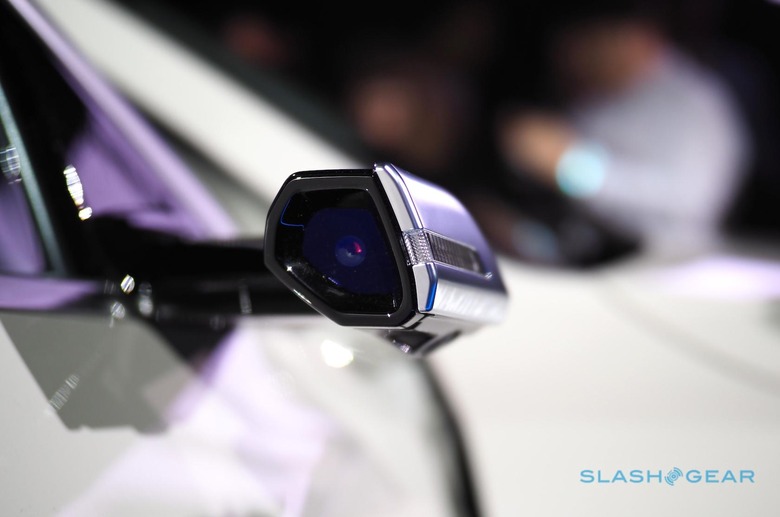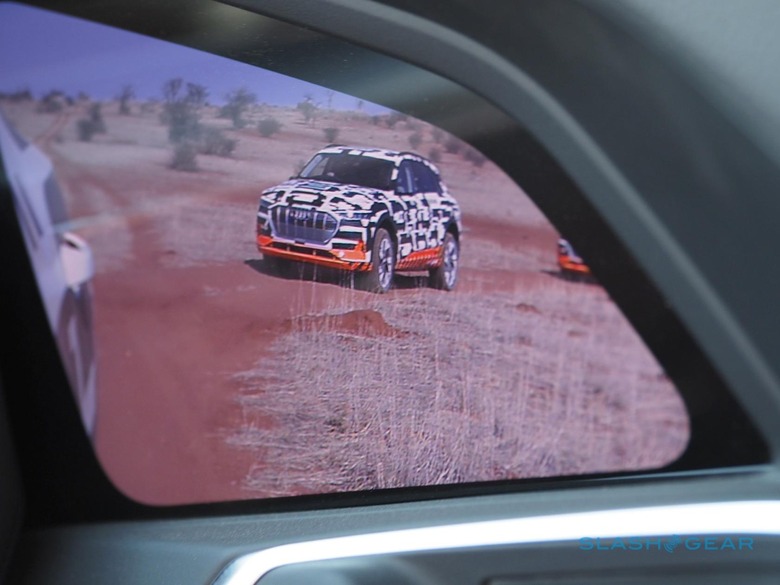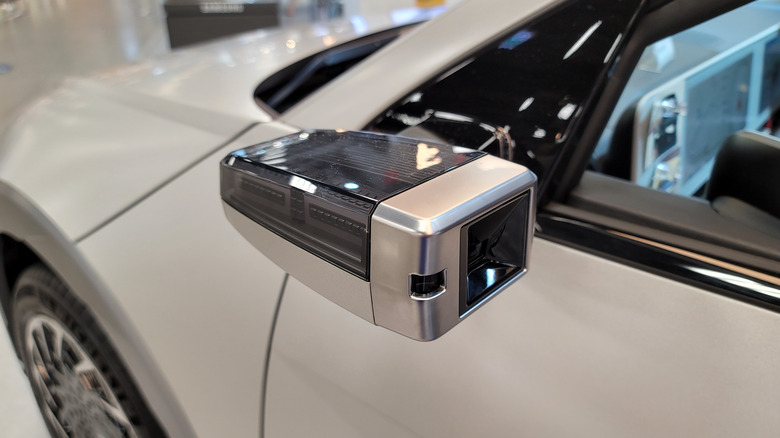Car Camera Side-Mirrors Could Finally Get US Approval
Cameras that replace car side mirrors with a high-tech – and more aerodynamic – alternative will go into safety testing by US road regulators, potentially bringing legislation currently blocking the high-tech upgrade in line with what's permitted internationally. Several automakers already offer vehicles with cameras in the place of traditional glass mirrors, but current laws prevent their use in the US.
The premise is straightforward. Rather than a bulky enclosure housing a glass mirror, far smaller cameras could be mounted on the wings of the vehicle. They would beam a live video of the view to displays mounted on the dashboard or doors inside.
Let's reflect on this idea
We've seen Audi offer that already, with the 2019 e-tron SUV in Europe, and other manufacturers have vehicles with similar technology. The idea of exterior cameras has also been a popular one on concept cars, where minimizing exterior features aids with aesthetics. There are legitimate reasons beyond just appearance as to why it would be useful, mind: traditional wing mirrors add to aerodynamic drag and thus reduce fuel economy, in addition to generating wind noise, automakers point out.

US laws aren't so welcoming, however. Currently, the regulations state that vehicles must have physical mirrors on the outside wings of the car for rearward vision. Even more basic enhancements available in other countries, like sections of those mirrors being curved to encompass a broader view of the road behind the car, aren't permitted.
Now, the NHTSA is considering a policy change. A new request for comment by the National Highway Traffic Safety Administration and Department of Transportation (DOT), initially reported by Reuters, opens up a plan to test the safety of "camera-based rear visibility systems" for public and industry feedback.
"Initial research will focus on light vehicles and be followed by research examining camera-based visibility systems on heavy trucks," the proposal explains. Using either "foreign production or prototype systems fitted onto U.S. or European specification vehicles," drivers will be tested in either vehicles that have both cameras and traditional mirrors, only the usual mirrors, or in vehicles with cameras alone. Tests will be carried out both during the daytime and at night.
"The research will involve track-based and on-road, semi-naturalistic driving in which participants will drive vehicles in multi-lane traffic scenarios while using the outside rearview mirrors or alternative system during lane changes and other typical driving situations," it's explained. The researchers will use eye-glance tracking, along with metrics about vehicle speed, position, steering angle, and turn signal status, and also gather feedback as to how comfortable and confident the test drivers are with each system.

While replacing exterior mirrors with cameras may not be permitted on US roads yet, that hasn't stopped the interior rearview mirror from getting a tech upgrade in some vehicles. Options like Cadillac's Rear Camera Mirror allow for the traditional view to be flicked over to a live video view from a camera on the back of the car. That bypasses any heads or cargo that might ordinarily block the view.
Still, some of the challenges that system runs into could be shared by digital side mirrors too. For a start, there's the fact that drivers' eyes are currently used to seeing some degree of depth when they look at a mirror in the car. Digital displays, however, flatten out that view, which some can find disconcerting.
Then there's the positioning of the displays themselves. In Audi's e-tron SUV, for example, the screens are mounted in the upper door assemblies, though still lower than side mirrors would usually be placed. Again, that's something which can take getting used to.
